You may not find this terribly rewarding unless you're included here, so this is a good time for casual and random browsers to turn back before they get too caught up in the sweep and majesty of the proceedings and can't let go.
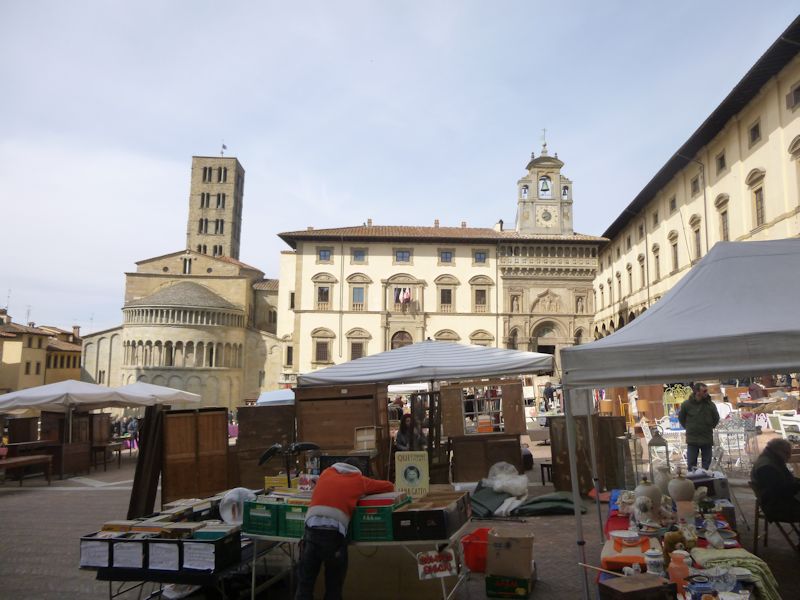
Arezzo, presently a small city of about 100,000, was once one of the most important Etruscan towns, trading liberally with the Greek cities of southern Italy as early as the 6th century BC. The Romans moved in in 311 BC and established "Arretium" as a military base along the Via Cassia as they pushed their presence over the mountains into the Po valley.

Vasari's Loggia. Maecenas, friend of Augustus and generous patron of poets and artists, whose name has passed into English to mean "a generous patron of poets and artists", came from an old Etruscan noble family of Arretium. In the Emperor Augustus' time, Arezzo was described as the third largest city in Italy and was famous for its pottery exports.
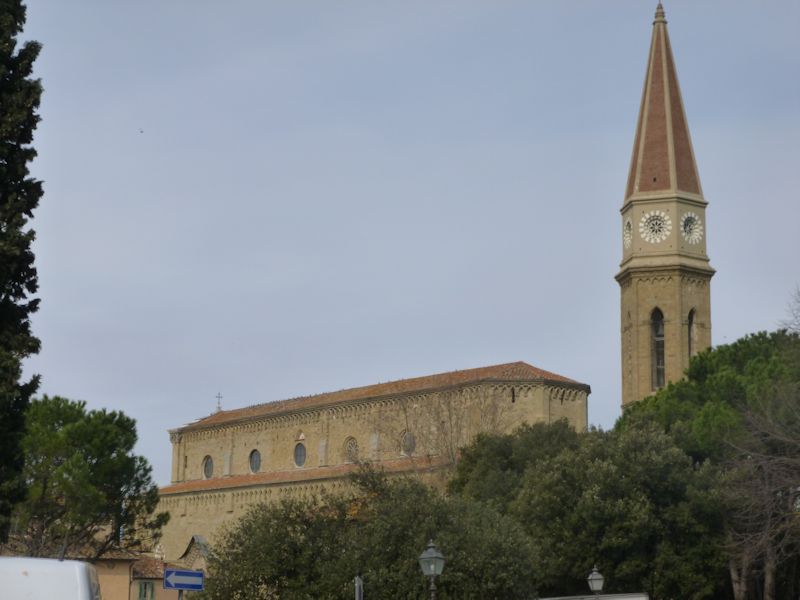
The Cathedral of Saint Donatus, or Duomo di Arezzo. In the late western Empire, Arezzo was ruled by prince-bishops, but the old Roman city was dismantled, partially by the citizens scavenging building materials to construct defensive fortifications against the Ostrogoths and Byzantines during the Gothic War and Lombard invasion of the 6th century, and partially by the Ostrogoths, Byzantines, and Lombards.
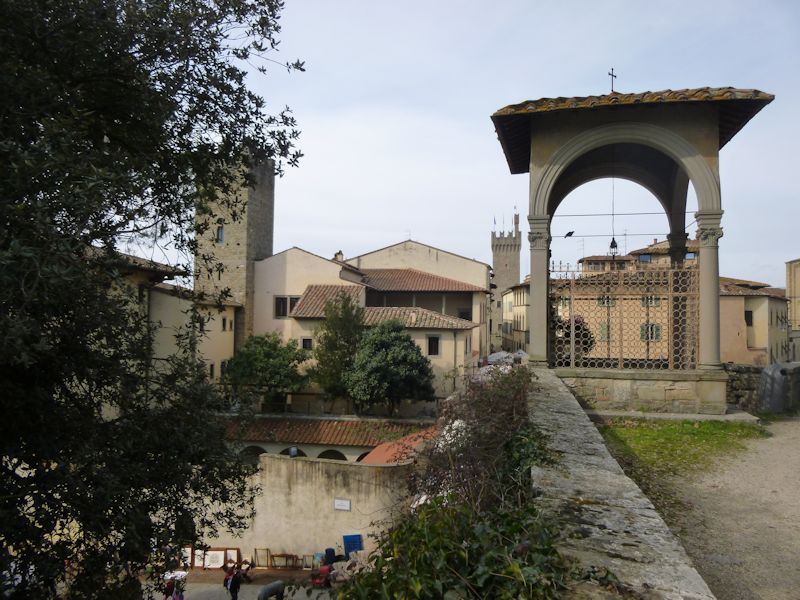
Like many northern Italian towns, Arezzo became a more or less self-governing commune in the late 11th century, usually Ghibelline in its foreign policy and sparring frequently with the Guelph superpower Florence, until in 1384 it fell under Florentine control as a client state for good and all. ('Petrarch's House' is just in front of that tower on the left.)
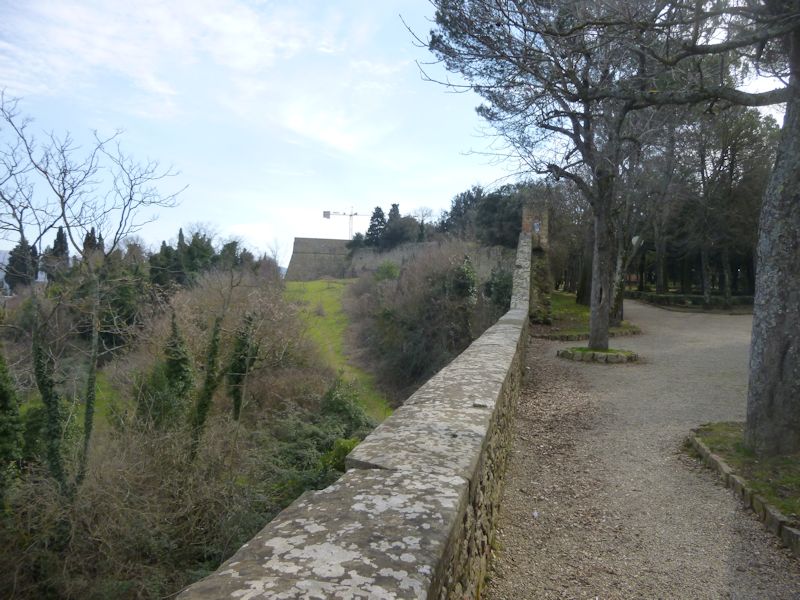
City walls and the Medici fortress at the top of the park. A crucial, very unpleasant event occurred in 1289, the Battle of Campaldino, outside Poppi up the river Arno a ways above Arezzo, in which the Guelph states of Tuscany, supporting the pope's interests, led by Florence and including Pistoia, Prato, Lucca, and Siena, roundly defeated the pro-Ghibelline forces from Arezzo and settled the balance-of-power issue for a long time. A young Dante Alighieri fought on the victorious Guelph side, but 12 years later, as a White Guelph Florentine diplomat, he was exiled from Florence by the Black Guelphs. Go figure.
We'll be visiting the Castello dei Conti Guidi in Poppi a few days from now.

In the Parco Prato ('park of meadows' or something like that), here is the vaunted statue of Petrarch, the 14th century humanist (the 'father of humanism', no less) and possibly the originator of the sonnet form with his 'canzoniere' to Laura. Petrarch was born in Arezzo in 1304 (but moved to southern France a few years later, then lived everywhere else for the rest of his peripatetic life), and "Petrarch's House" is both a tourist attraction and the home of the Petrarca Academy, though it was built in the 16th century on the site of what was thought to be the remains of the right house.
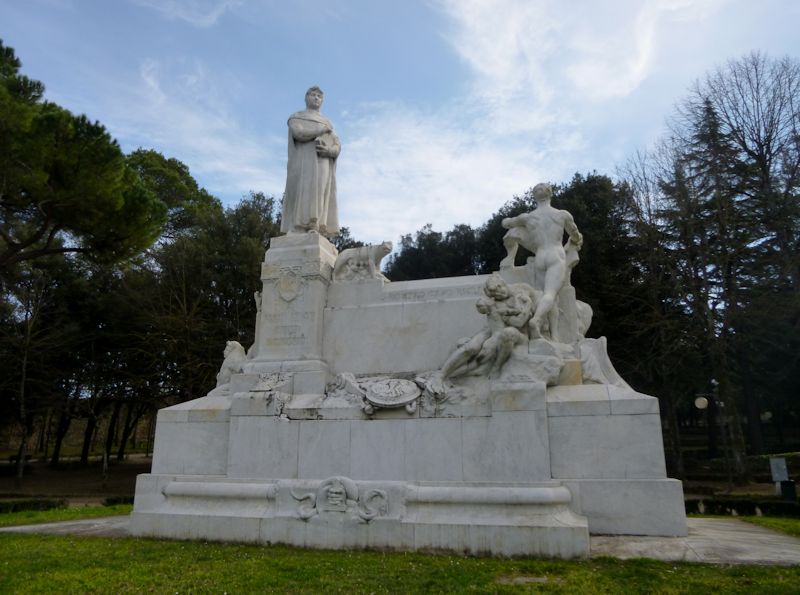
The Monument to Petrarch: I think that it's horrible, but maybe that's just me; but maybe not -- it was made by A. Lazzerini in 1908 and so detested by many that bitter battles were fought before it could be inaugurated in 1928.
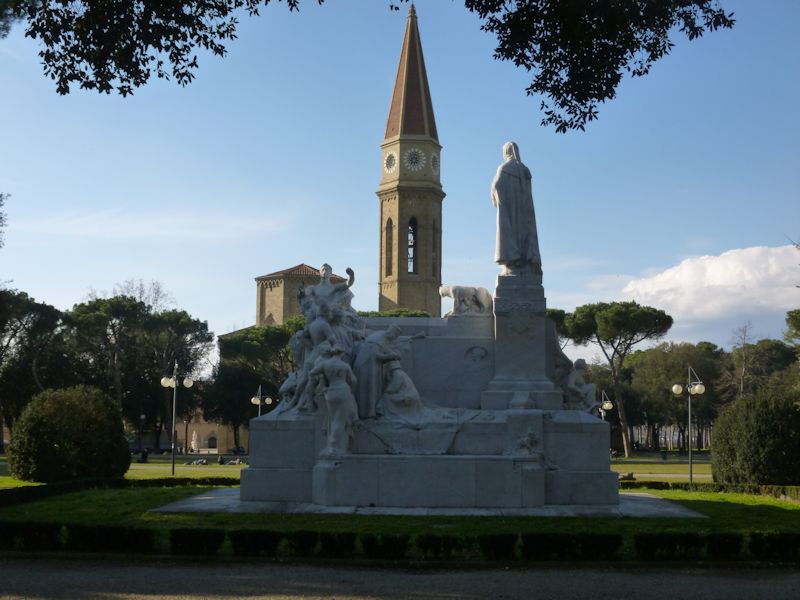
Here it is from the back. Ouch.

Here's the apse-end of the Duomo and its belltower from the Passeggiata del Prato, the Prato promenade.
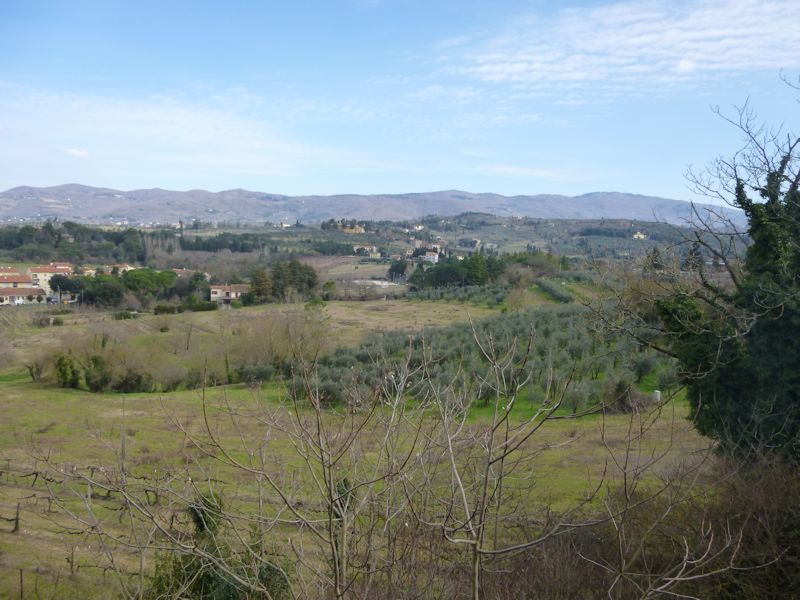
Some Tuscan countryside from the northern city wall

The back of the Duomo on the right, looking towards the Palazzo dei Priori or town hall

I read somewhere that the belltower was originally connected to the cathedral but kept breaking the stained glass windows when the bells pealed out, so it was moved a few feet away. No source for that but it would have been fun to watch them moving it.

Reunited with Kristin
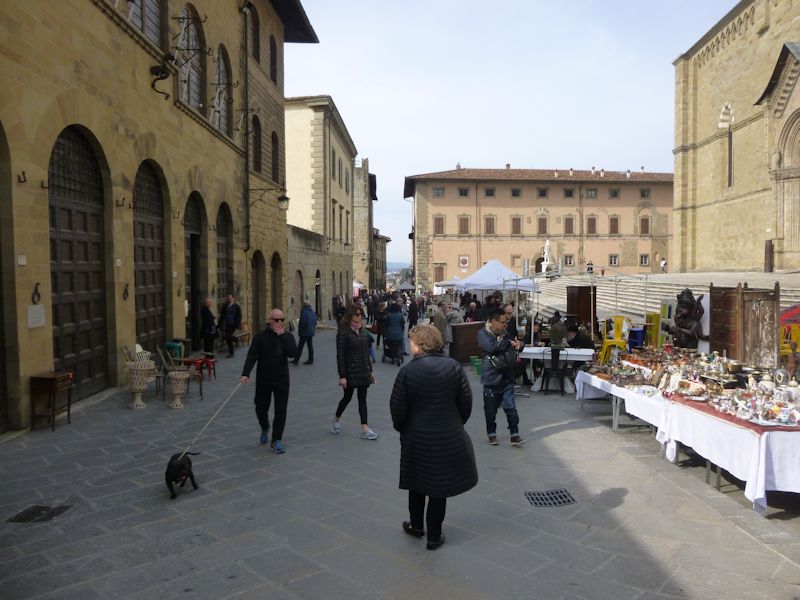
More antiques and what not alongside the cathedral

The Palazzo Comunale and the Piazza della Libertà, from the cathedral

Guarding the Duomo, the late 16th century Ferdinand I de' Medici, Grand Duke of Tuscany, by all accounts a decent guy.
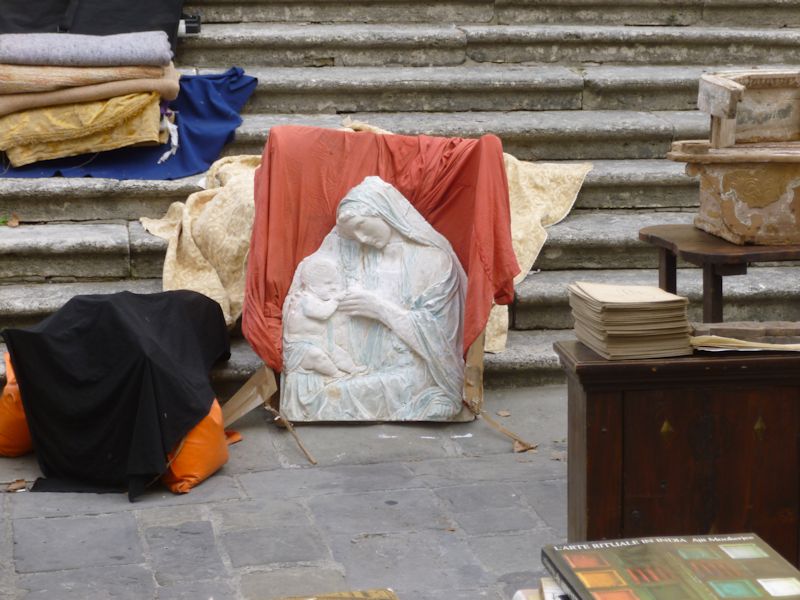
A touching scene
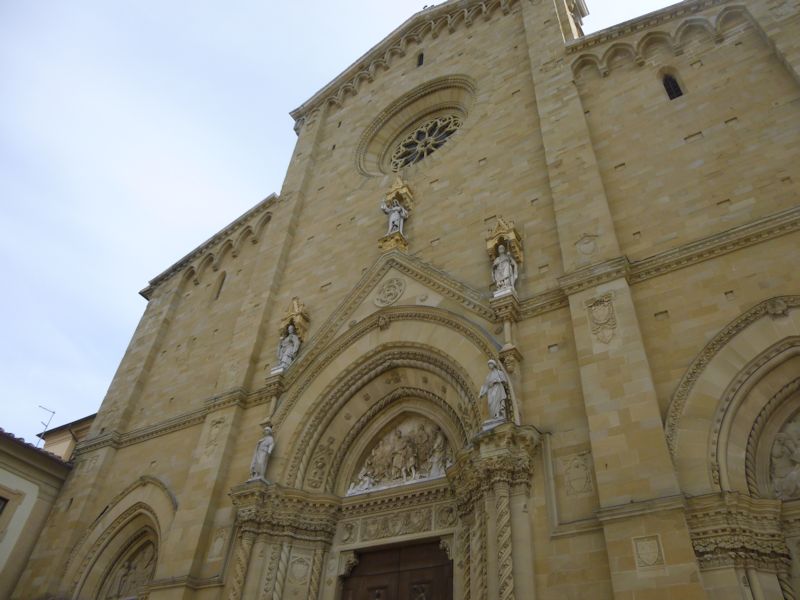
The Cattedrale di SS Donato e Pietro at the top of the city, begun in 1278 with work continuing through to the early 16th century, in 1511. All except for the neo-Gothic façade, which was added in the early 20th century; nicely done, in my view.
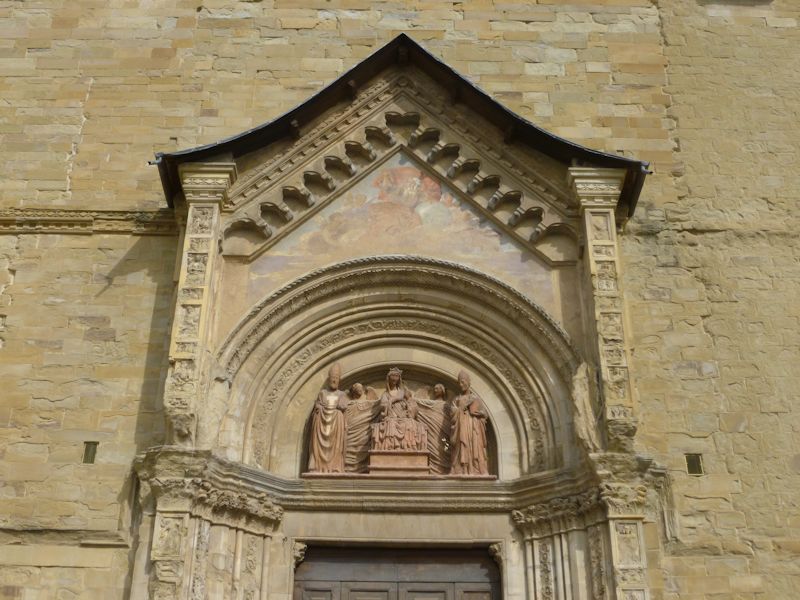
But the Romanesque-Gothic portal on the south side dates from the 14th century.

A nave and two aisles, but no transept, with 16th century stained glass windows along the right aisle, and some 15th century stained glass behind the altar. Arezzo was converted to Christianity (we are told) by St Romulus, a good friend of St Paul, and became a bishopric in AD 304. The second bishop here was St Donatus, and the present cathedral is dedicated to him and to St Peter the Apostle. The first eight bishops here were all considered to be saints, a difficult score for any cathedral to beat.

This is a 14th century funerary monument to Teobaldo Visconti, a.k.a. Pope Gregory X (d. 1276), who was elected pope by surprise in the longest papal election ever (1268-71) -- the one in which the local citizens locked the College of Cardinals in a room with only bread and water until they made a decision, which still took them another year -- and who at the time of his election was engaged in a Crusade in the Holy Land with King Edward I of England and didn't want to come back. He died here in Arezzo (of a hernia, ouch).

Duomo scenes
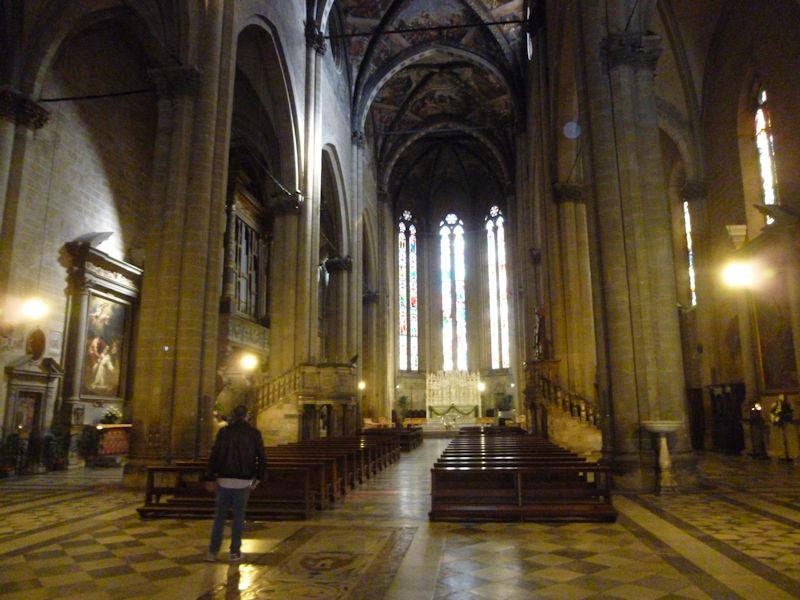
15th century stained glass in the presbytery, and a big white thing by the altar
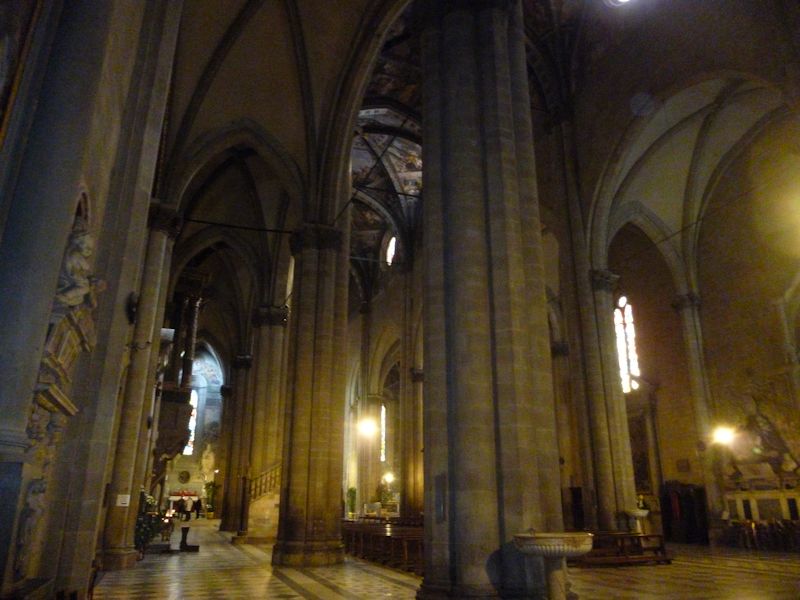
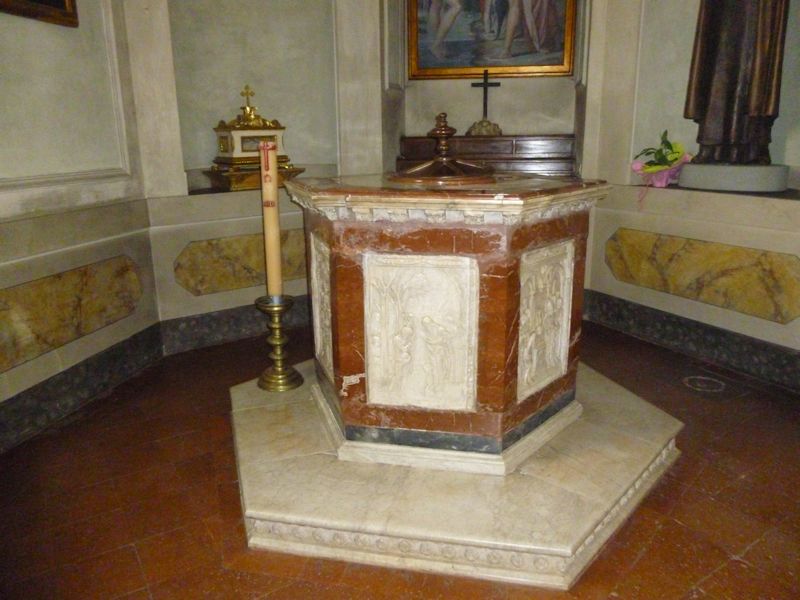
A hexagonal baptismal font, with one of the reliefs by Donatello, the others by his helpers.
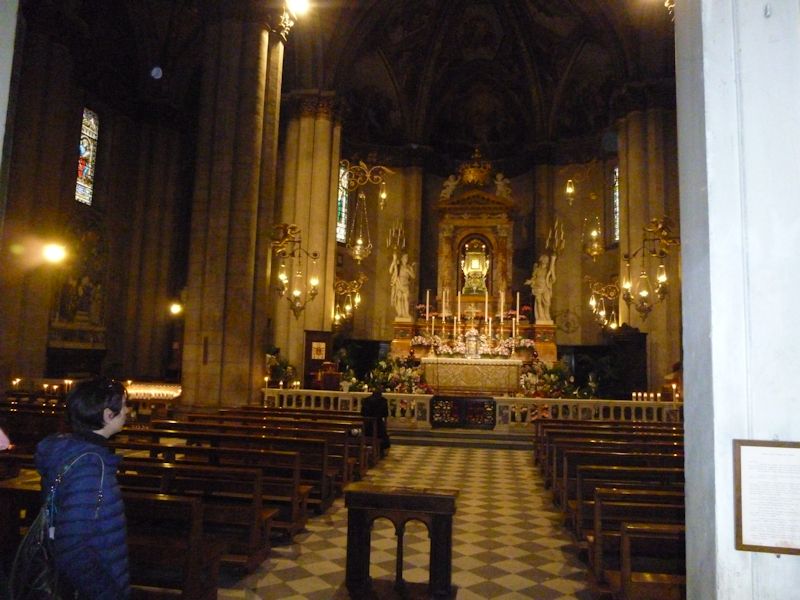

The pulpit
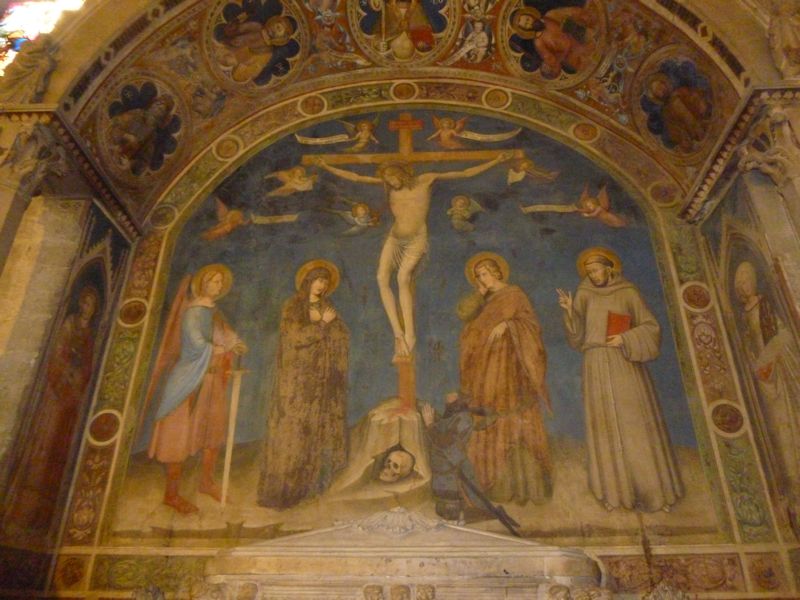
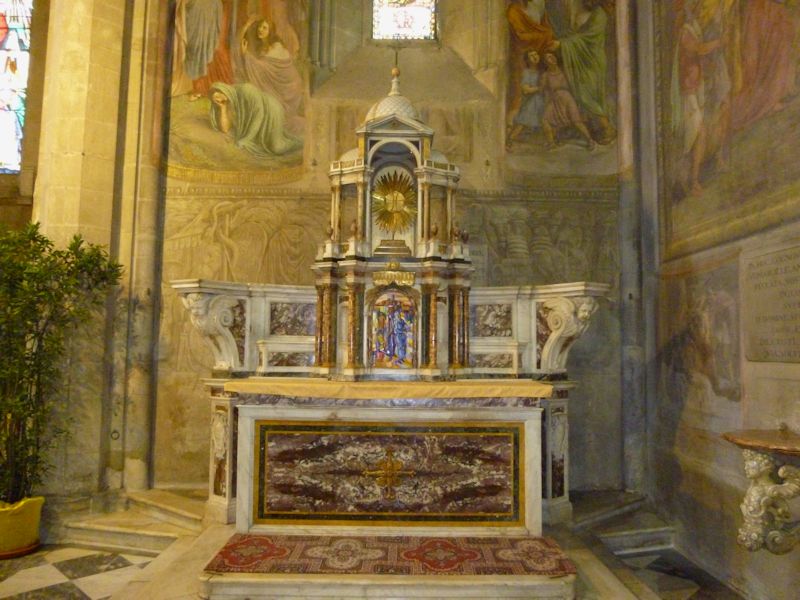
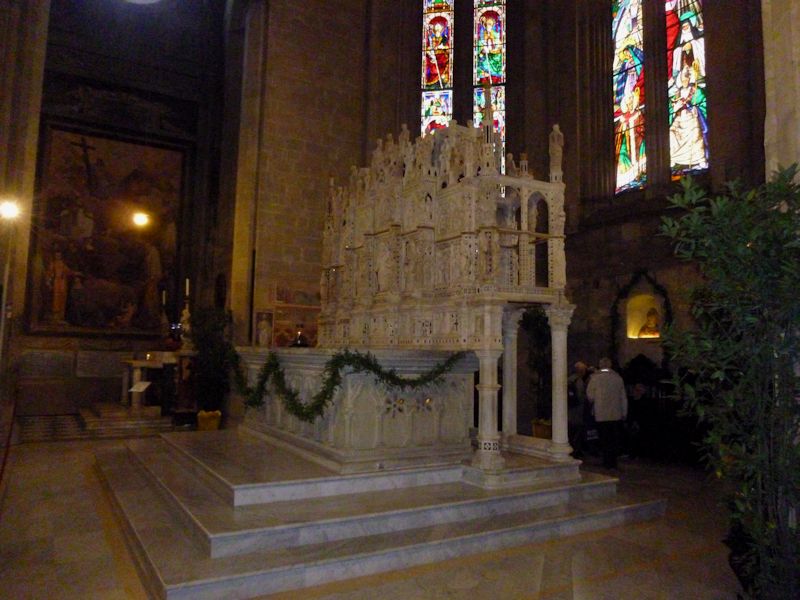
The marble Arch of St Donatus by the main altar, created by nearly all the Tuscan sculptors living in the 14th century
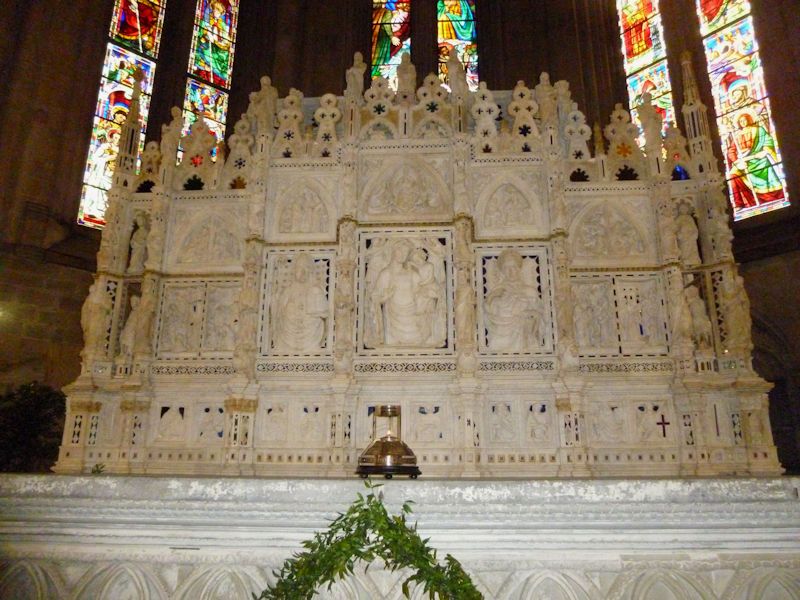
It's dedicated to St Donatus of Arezzo, patron saint of the cathedral and the city, said to have been an early bishop here. Persecuted by the Eastern Roman Emperor Julian the Apostate (his childhood friend, we're told), Donatus escaped to Arezzo, worked lots of miracles (bringing dead people back to life, curing blindness, casting out demons, and slaying a dragon), and eventually was elevated to bishop. The local Roman prefect, however, had him beheaded for some reason in 362 (some say 363).
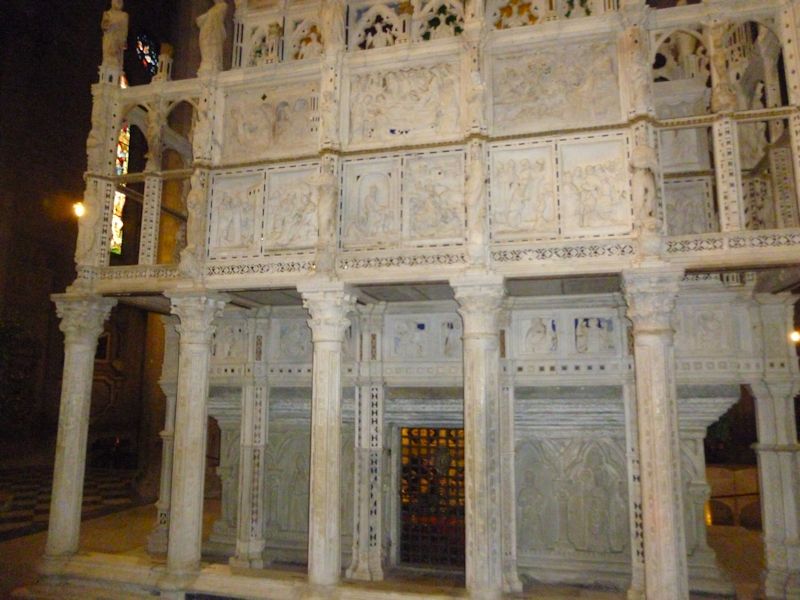
The back of Donatus' Arch -- one would have expected to find the worthy martyr tucked away in a reliquary in that lighted chamber at the base, and something's in there, but it's not Donatus. He was around here somewhere, long before the Arch was built, but somebody took the relics for their own use elsewhere. (Some of his relics, and the dragon's as well, ended up on the Venetian island of Murano in 1125.)

An august personage with a metal face reposes presumably in peace, as Kristin commemorates the lamented death today of Mr Spock.
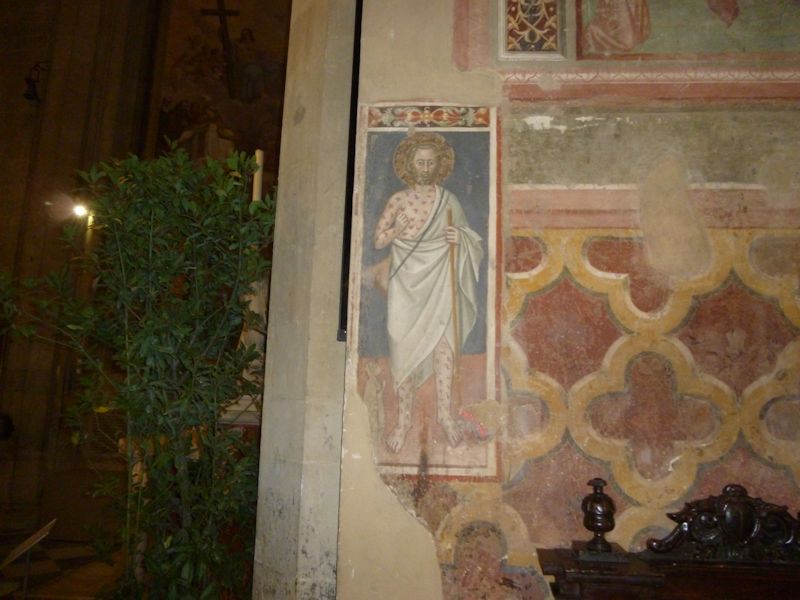
Ouch.

The funerary monument of Guido Tarlati, bishop and lord of Arezzo in the early 14th century, commissioned by his brother, the mercenary commander Pier Saccone di Pietramala, who took over Arezzo on his brother's death, ran the place into the ground, and then sold it to the Florentines, then over the next two decades tried at least four times to recapture it, with huge collateral damages. (Inches to the right of this, there is Piero della Francesca's Magdalene from the 1460s, and I didn't notice it.)

In the Chapel of Madonna del Confort, classic terracottas by the della Robbias
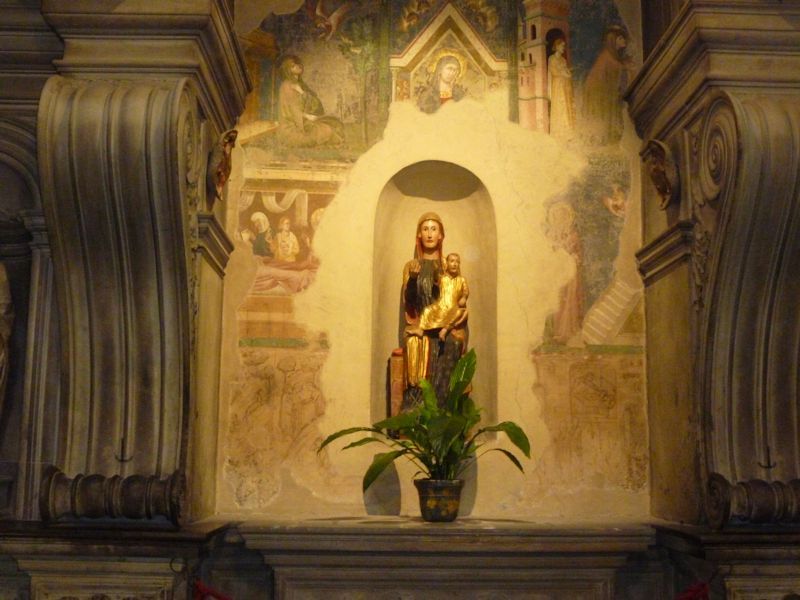
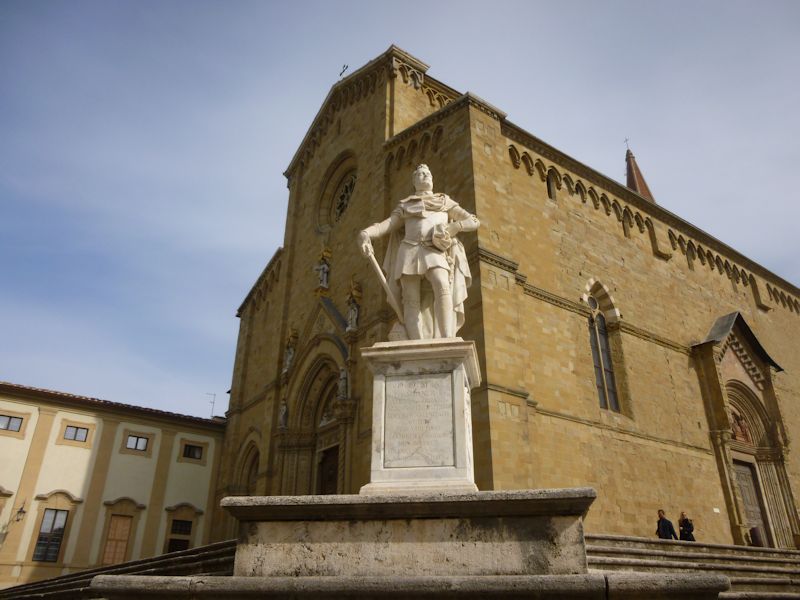
Back outside the Duomo, Duke Ferdinand I resolutely stands guard.
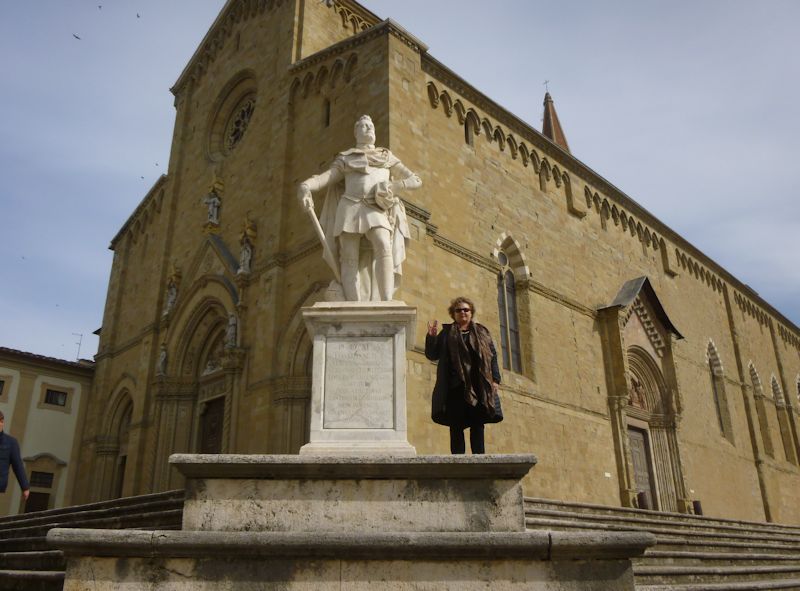
Rest in peace, Mr Spock.
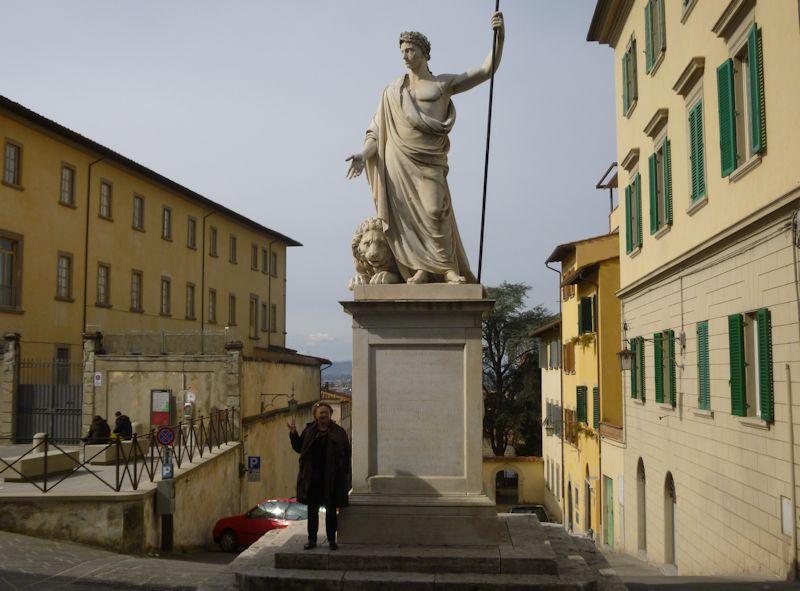
A statue of Duke Ferdinand III of Tuscany
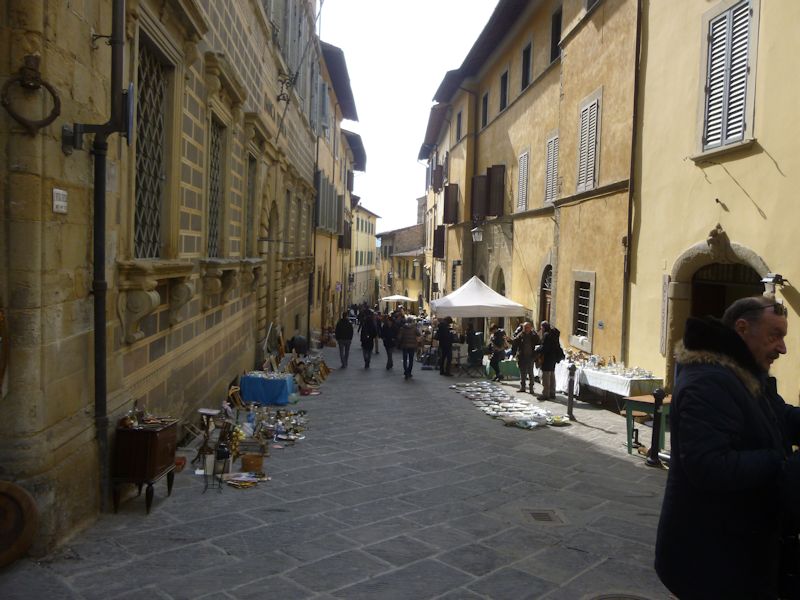
More antiques

The "tower of a hundred windows" (Santa Maria della Pieve)

Stamps and coins, buttons, and chairs, on the Via Cesalpino

The Basilica of San Francesco (begun in 1290), with a statue of Vittorio Fossombroni, the brains behind the Tuscan regime in the first half of the 19th century. We can take or leave the statue, but we'll be back to see the masses of Piero della Francesco frescoes inside when the church reopens.
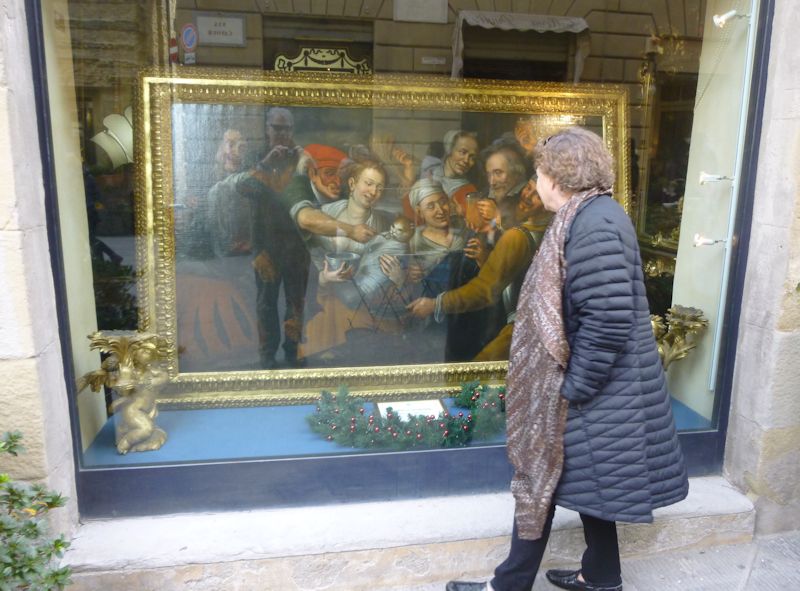
Aw, a kitty painting.
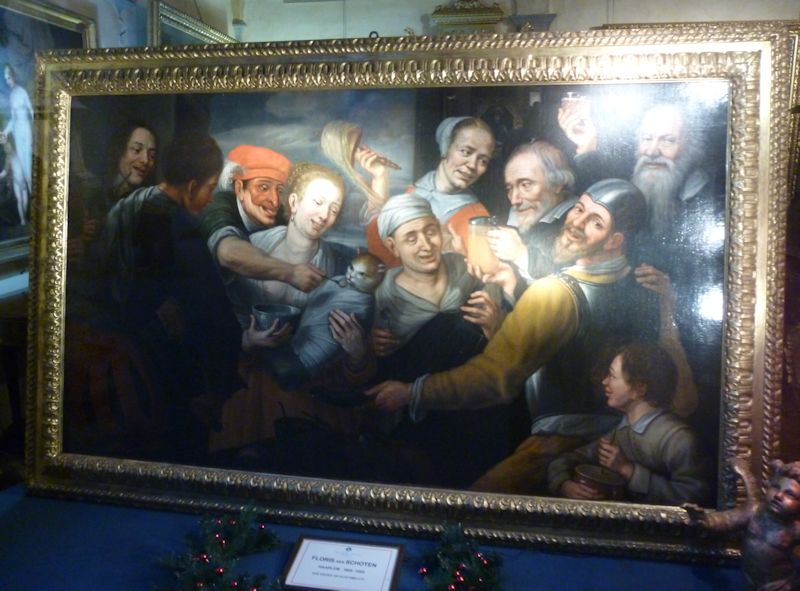
"Burlesque scene with a wrapped-up cat", by Floris van Schooten of Harlem, 17th century. No use inquiring about the price.
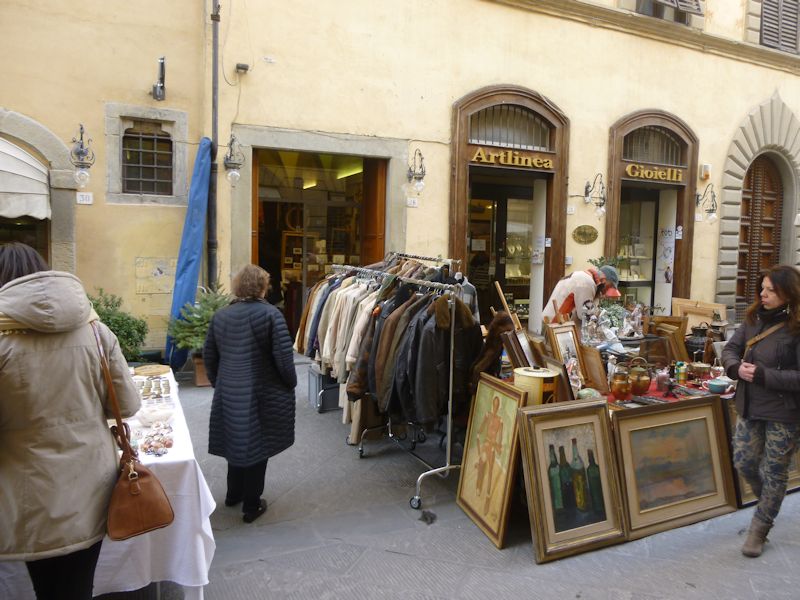
Antiques, and other stuff
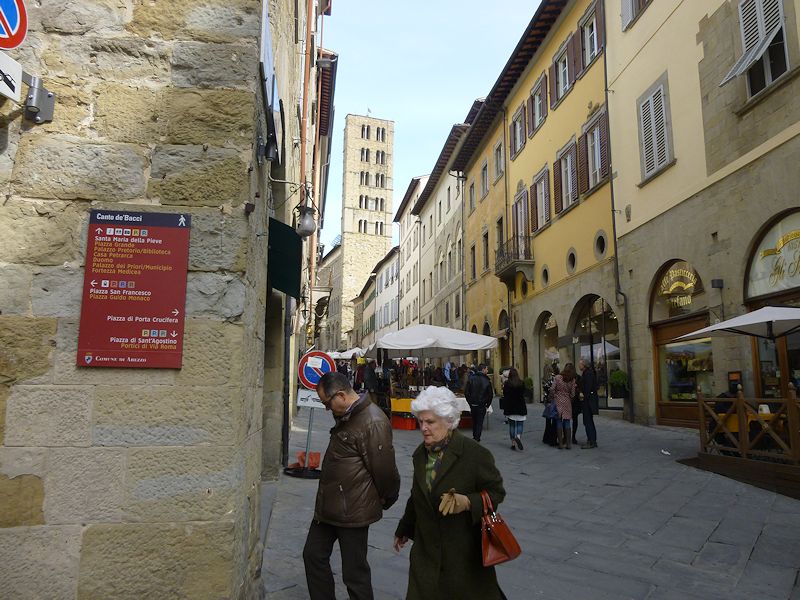
The Corso Italia looking up towards the Pieve
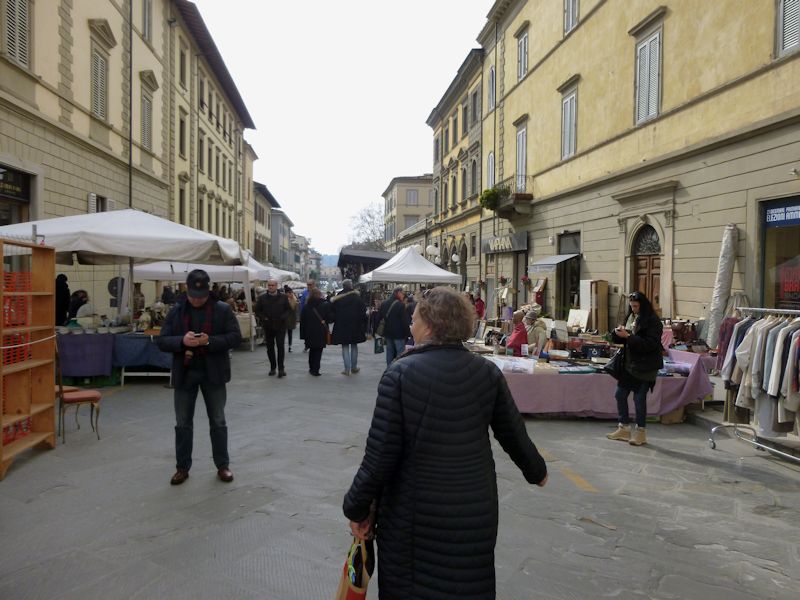
At the moment, we're heading downtown to see how far this street market thing goes.

The Corso Italia -- it's still going.

"God protects our children"
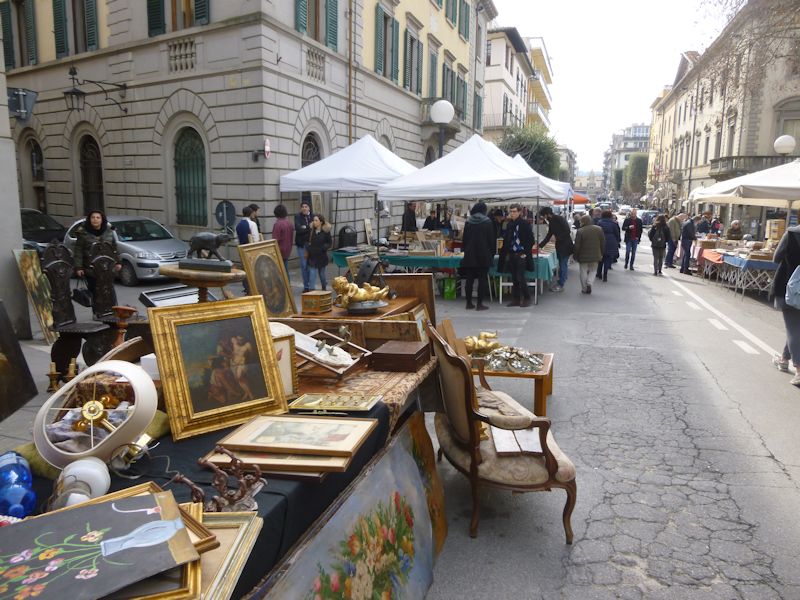
We're near the bottom end of it; there are cars passing by down the next block.
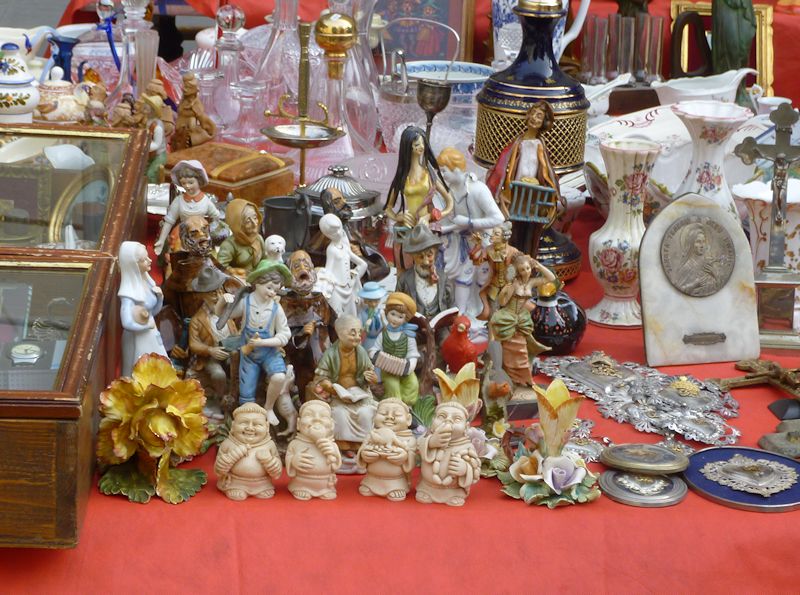
Fat friars stuffing their faces. We'll walk back up the hill, slowly, to be sure we haven't missed anything.
 Dwight Peck's personal website
Dwight Peck's personal website



































































